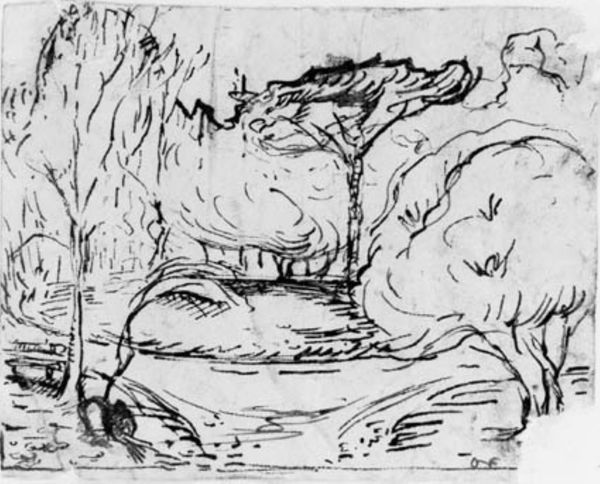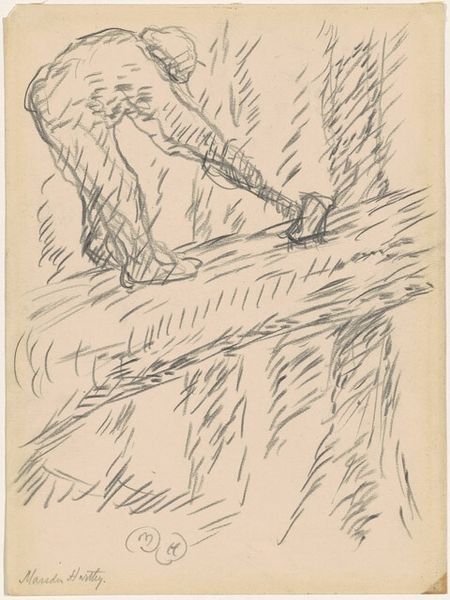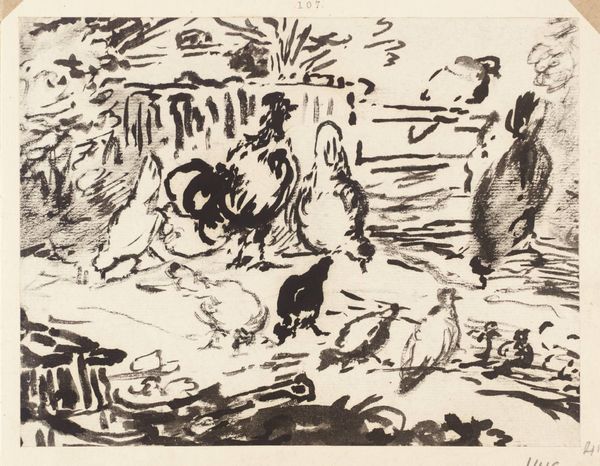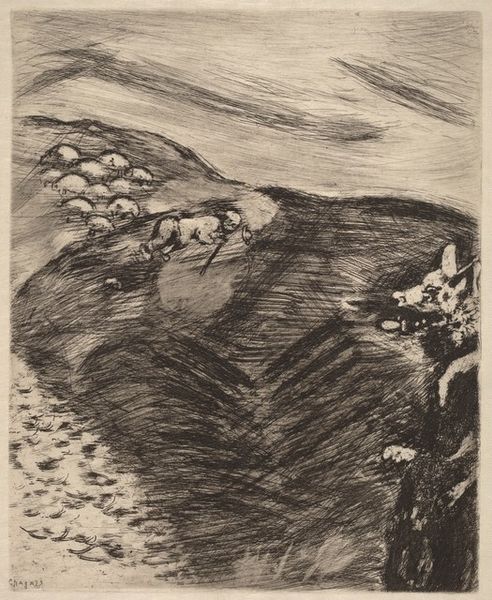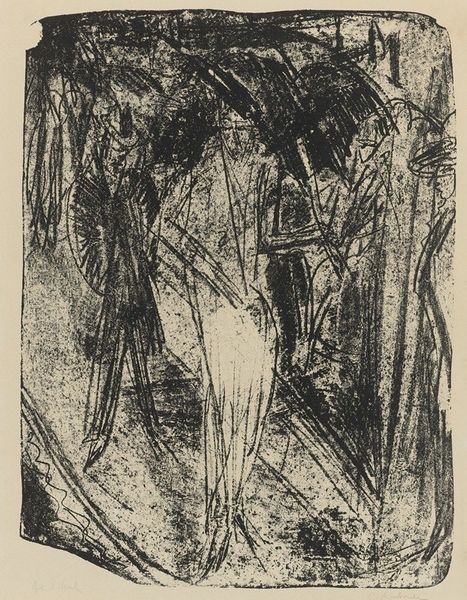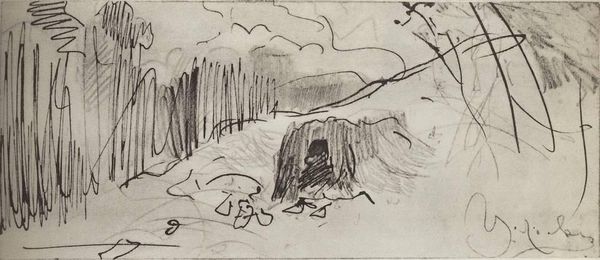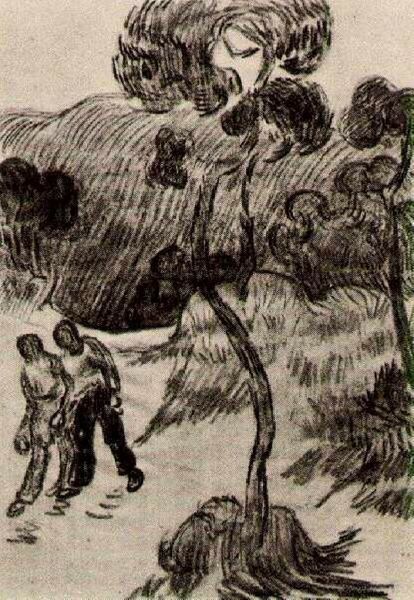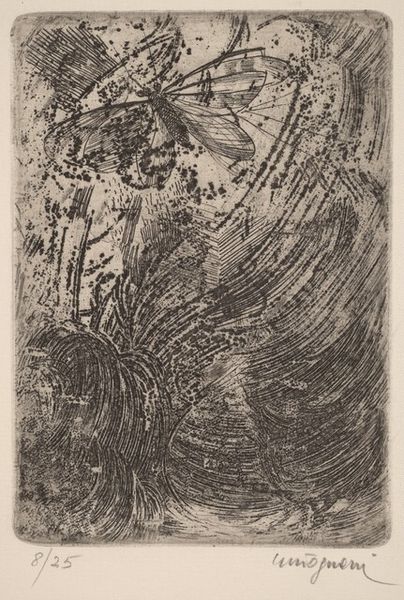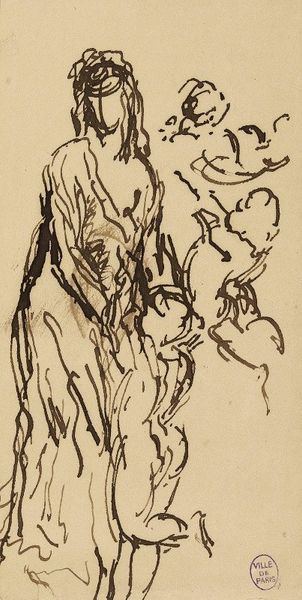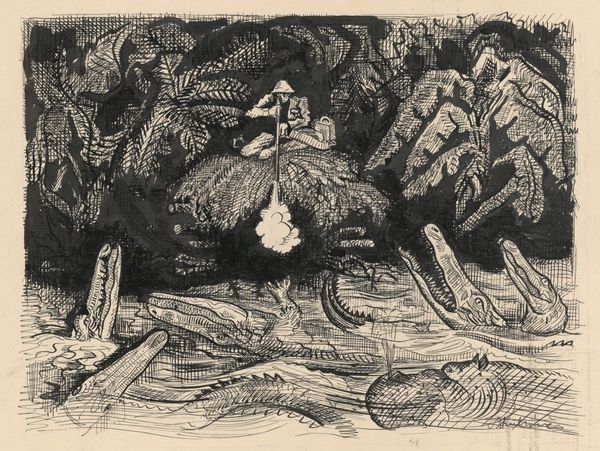
drawing, ink
#
drawing
#
landscape
#
ink
#
post-impressionism
Copyright: Public domain
Vincent van Gogh made this work, Study of a Fruit Tree, using a reed pen and ink on paper. The drawing comes across like a forceful, restless interpretation of the natural world. Van Gogh’s art training in the Netherlands and Belgium involved rote copying and a sense of realism appropriate to the market for popular prints. However, his encounter with Impressionism in Paris during the mid-1880s encouraged him to think of nature as a stimulus for personal expression. The image is not a straightforward depiction, but rather a stylized interpretation, as you can see in his expressive and energetic drawing style. Van Gogh sought to reflect the raw, untamed qualities of the landscape, rejecting academic artistic conventions. He creates a sense of vitality in his work, suggesting that art could represent the dynamism of life itself. Art historians use letters, biographies, and exhibition reviews to get a clear picture of the cultural and institutional context in which such works were made. This artwork remains a testament to the artist's unique perspective and innovative approach to art-making.
Comments
No comments
Be the first to comment and join the conversation on the ultimate creative platform.

